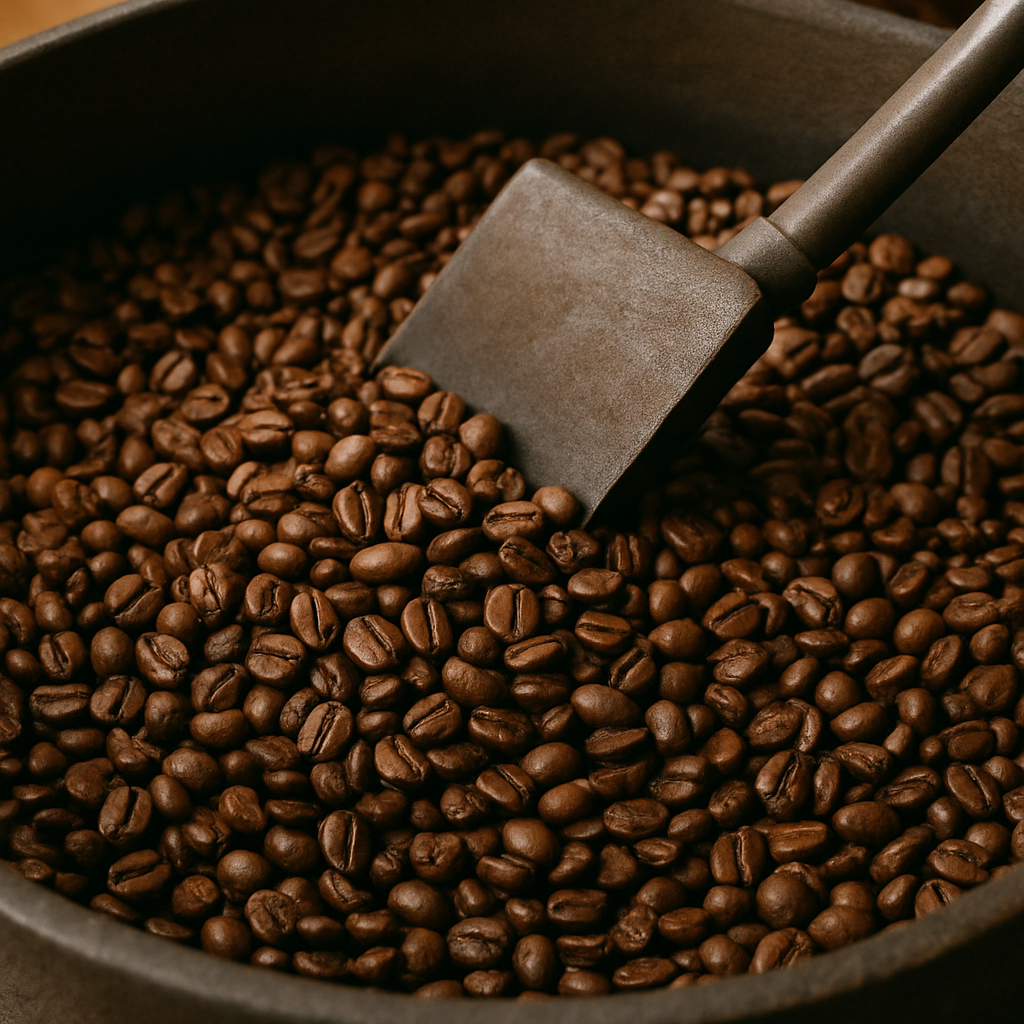
Coffee Roasted Coffee: How Coffee Is Roasted
Coffee Roasted Coffee: What It Means and Why It Matters
When someone says they want coffee roasted coffee, they’re usually craving something straightforward: a brew that actually tastes like coffee. But that phrase also hints at something deeper, how the roasting process defines everything from taste to texture to aroma.
Let’s break down what coffee roasting is, why it’s essential, and how different roast levels change your experience.
☕ What Does "Coffee Roasted Coffee" Really Mean?
This phrase often pops up when coffee drinkers want a bold, nostalgic, unmistakably coffee-flavored cup free of fancy syrups or novelty flavors. In other words: pure roasted coffee beans, skillfully transformed.
Roasting isn’t just a step in the process; it’s the key to unlocking coffee’s full potential (Illy & Viani, 2005).
🔥 How Coffee Is Roasted
Coffee roasting involves applying heat to green coffee beans, transforming them into the aromatic, flavorful brown beans we brew.
Key stages:
- Drying Stage (Up to 320°F) Moisture evaporates
- Maillard Reaction (~320–370°F) Sugars and amino acids create color and flavor
- First Crack (~385°F) Gases escape, flavor develops rapidly
- Development/Caramelization (~400–450°F) Roasters fine-tune for desired roast level
- (Specialty Coffee Association, 2023)
🧭 Roast Levels Explained
| Roast Level | Color | Flavor Profile | Caffeine Level | Best Brewing Method |
|---|---|---|---|---|
| Light Roast | Light brown | Bright, acidic, complex | High | Pour-over, Chemex |
| Medium Roast | Brown | Balanced, sweet, caramel notes | Moderate | Drip, Aeropress |
| Dark Roast | Dark brown | Smoky, bold, low acidity | Lower | Espresso, French press |
(Source: NCAUSA, 2023)
🌍 Coffee Roasted for Flavor, Not Just Strength
Many assume dark roast means more caffeine, but light roasts actually retain more due to less exposure to prolonged heat (Clarke & Vitzthum, 2001). Instead of focusing on strength, roasters today craft beans for flavor expression, just like Overclock Coffee Co. does with its flagship Dragon’s Breath Roast, a smooth, unflavored dark roast designed for pure coffee lovers.
🏆 Best Beans for That “Roasted Coffee” Flavor
Looking for coffee that tastes like… well, coffee? Go for:
- Single-origin beans from Colombia or Ethiopia
- Dark roast blends with minimal additives
- Fresh-roasted beans (ideally within 2–3 weeks of roast date)
Try Overclock’s Expedition Colombia, a single-origin roast grown at 4,000 ft and crafted for smooth nuttiness with cherry-like acidity.
🧼 Fresh Roast vs Stale Roast
Fresh-roasted beans offer significantly better aroma, bloom, and flavor (Seninde & Clarke, 2020). Here’s why:
| Factor | Fresh-Roasted Coffee | Stale Coffee |
|---|---|---|
| Aroma | Strong, complex | Flat or papery |
| Flavor | Bright, nuanced | Bitter, oxidized |
| Brewing Bloom | Rich crema or bloom | Minimal reaction |
| Shelf Life | 2–4 weeks optimal | Over 2 months declines |
Final Sip
“Coffee roasted coffee” isn’t a redundant phrase; it’s a demand for quality. Whether you're sipping a light roast with citrusy zing or a dark roast with earthy depth, the roast defines the experience.
And at Overclock Coffee Co., we’re roasting with purpose, freshness, and performance in mind.
References
Clarke, R. J., & Vitzthum, O. G. (2001). Coffee: Recent Developments. Wiley-Blackwell.
https://www.wiley.com/en-us/Coffee%3A+Recent+Developments-p-9780632053842
Illy, A., & Viani, R. (Eds.). (2005). Espresso Coffee: The Science of Quality. Academic Press.
https://www.elsevier.com/books/espresso-coffee/illy/978-0-12-370371-2
National Coffee Association USA. (2023). Types of Coffee Roasts.
https://www.ncausa.org/About-Coffee/Coffee-Roasts-Guide
Seninde, D. R., & Clarke, J. (2020). Understanding the freshness of coffee: A review. Journal of Food Science, 85(11), 3600–3610.
https://ift.onlinelibrary.wiley.com/doi/10.1111/1750-3841.15460
Specialty Coffee Association. (2023). The Coffee Roasting Process.
https://sca.coffee/research/coffee-roasting-basics
